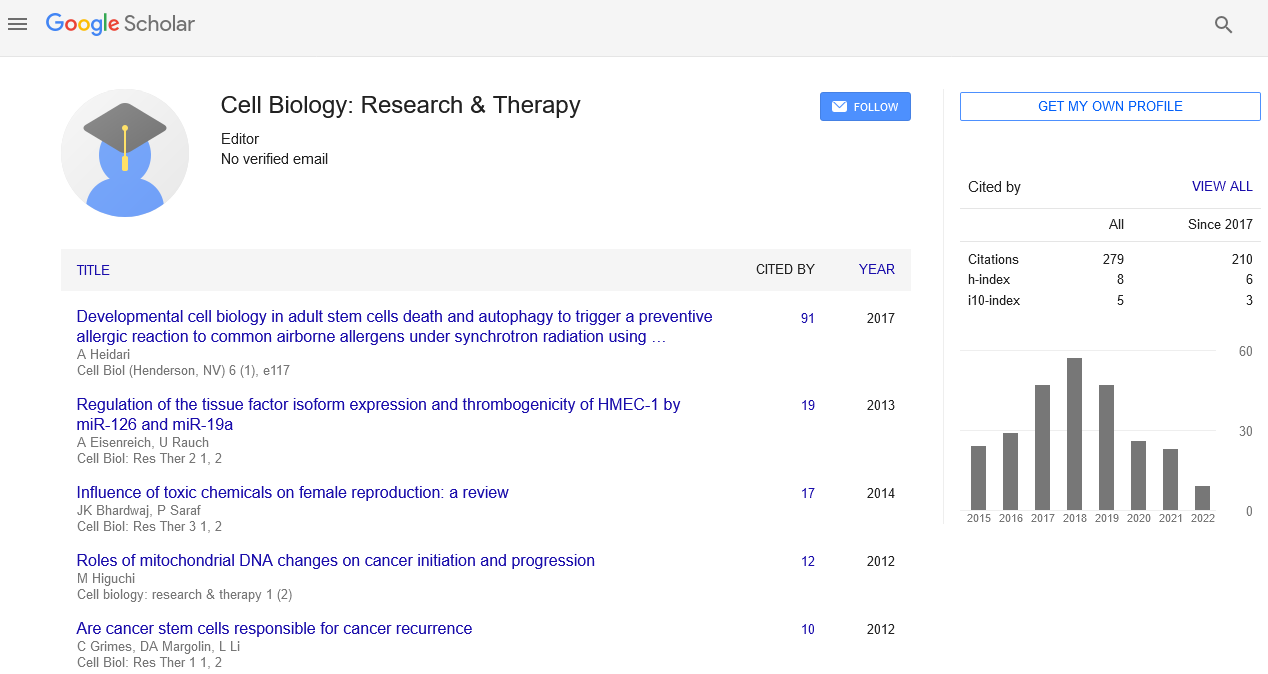Progress on the design of metal-based drugs for cancer therapy
M Helena Gracia, Tania S Morais, Andreia Valente and Ana Isabel Tomaz
University of Lisbon, Portugal
: Cell Biol (Henderson, NV)
Abstract
Statement of the Problem: Research on the field of metal-based compounds for the treatment of cancer diseases has attracted increasing interest due to the urgency to find more efficient and selective treatments than the platinum-based drugs in clinic use. In this frame, ruthenium compounds hold a prominent position due to the success of NAMI-A and KP1019 in progressing through clinical trials. Nevertheless, this progress has been retarded due to problems concerning their aqueous instability and complicated ligand exchange chemistry, characteristic of inorganic complexes. As alternative, rutheniumbased organometallic compounds are proposed as viable alternatives to circumvent the disadvantages of platinum-based drugs, since their cytotoxicity might involve different modes of action and, in many cases, present reduced toxicity profiles.
Methodology & Theoretical Orientation: During the last decade, our research group has been developing cyclopentadienyl-ruthenium (RuCp) based compounds that revealed important cytotoxicity against different cancer cell lines surpassing cisplatin in activity. In vivo studies for one of our leads on a highly metastatic breast cancer (MDA-MB-231, a model for triple-negative breast cancer) revealed a dual effect by suppressing primary tumor growth and inhibiting the formation of metastases. The present communication overviews the progress in our work toward the development of new organometallic metal (II) drugs mainly based on ´RuCp` and ´FeCp` scaffolds. Moreover, our latest studies on other families of new compounds based on Ru (III) complexes bearing NN, NO and NS bidentate ligands will be also presented.
Conclusion & Significance: The results presented herein offer valuable and convincing evidence for the relevance of metal-based compounds as future anticancer therapeutic agents. The overall rationale on the design of these new families of compounds envisages finding possible correlations between structural features and biological activity to guide forthcoming work. Thus, chemical properties and structural features of each compound are intended to be correlated with its biological effects.
Biography
M Helena Garcia has been mainly centered in synthesis of organometallic compounds in view to potential applications with benefit to the society, namely in the field of nonlinear optics and in the search of new anticancer metalodrugs for chemotherapy. She authored over one hundred publications and several book chapters. She has been leader of a number of national and European funded scientific research projects and for many years was Member of the “Division of Organometallic Chemistry of European Association for Chemical and Molecular Sciences”, as delegate of Portuguese Chemical Society.
E-mail: mhgarcia@fc.ul.pt
 Spanish
Spanish  Chinese
Chinese  Russian
Russian  German
German  French
French  Japanese
Japanese  Portuguese
Portuguese  Hindi
Hindi 